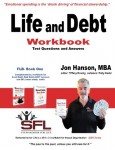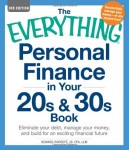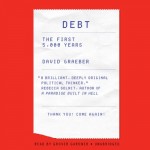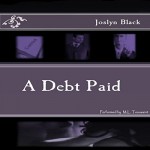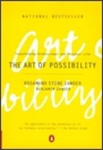Top Rated Videos
How to Get Out of Debt
Quickly eliminate your debt forever!
Power down your debt by following proven simple Biblical principles. Learn how to:
Create Your Own Personal Financial Statement(PFS) and Find Your NET Worth
Finances do not need to be so complex. I show you what makes up a Personal Financial Statement and how to read it. What a great and not so great financial statement looks like. You will learn what your true NET worth is and how “getting rich” is really a simple matter of changing a negative to a positive or “greater than” to a “less than”.
Increase Your Income and Learn What the Bible Says About Income
That means digging into the different types of income. I show you what retirement really means and that it is definitely possible to retire young and retire rich. Also, what the Bible says about being rich. Learn how to get started with new investments such as real estate or buying an existing business. I show you some simple checks and balances for reviewing a business before you buy it.
Analyze Your Expenses and Eliminate Unnecessary Expenses
Using your Personal Financial Statement/NET Worth Calculator (* Bonus (no-cost) download from my website) you will see the expenses that you can eliminate that will help you get out of debt quickly. I show you the difference between a good debt and a bad debt and why not all debt is bad.
Get Out of Debt Using My KO Debt Plan
Learn how to knock out(KO) your debt one at a time. Your goal should be to live debt-free and with my KO Debt Plan you can achieve that at an accelerated pace. I show you specific examples of the simple process of removing your debt. In addition I will show you:
• What your financial action plan should look like
• Why you should tithe
• How much money you should tithe
• How much house you can really afford and why you shouldn’t rely soley on real estate agents and bankers.
Note: These principles are based on what it says in the Bible. Regardless, if you are “religious” or not you can benefit from applying these methods. I am not interested in preaching to you but I am excited to share what I have learned and the freedom that comes along with being debt-free.
About The Author
If you know me, you know that my mind never rests. I like to get things done. I like to try new things. And most of all, I like to succeed. While success may mean different things to different people we can all agree that winning is always better than losing. My desire for you is to minimize the times you lose.
My investments include businesses, real estate and stocks. I strive to help others maximize their time and succeed financially as well as personally. I hate bad debt! Also, I love to write and actively cover financial, business (marketing, social media & blogging) and lifestyle topics on my blog (http://5minaday.com)
Learn how to get out of debt. Scroll up &click the buy button now.
Product Features
- Used Book in Good Condition
Sovereign nations don’t have to borrow their money into existence, yet the U.S has done so since 1913. You cannot “pay down” the National Debt because all of our money is created out of debt. To reduce the debt would be to reduce the national money. The only solution is to do what’s been done many times throughout U.S. history, issue debt-free U.S. Notes, instead of Federal Reserve Notes and break free of the debt money system. The problem is the same for every nation on earth, as is the solution. Nations don’t have to borrow; nations can create.
Live, laugh, learn….This is the workbook to complement the audio and text of Good Debt, Bad Debt (Penguin 2005, 2007). It is also used at SFLToday.org Workshops and in our video classes and as the starter courses for those personally coached by Jon Hanson. The workbook contains approximately 80 pages. Several original cartoons and slightly sarcastic expanded explanations on Houses, Spouses, and Cars! Oh my! Here is a breakdown of topics (aside from an overall understanding of debt and time). Table of Contents Preface: It’s about time and money! 4 Positive Thinking Isn’t Enough 6 Habit 7 The Daily Practice 7 Most Everything Good Happens in the First Six Feet 7 The Picture of Good Stewardship 9 The Practice of Good Stewardship 10 The Promise of Good Stewardship 12 I Know, You’re Different, Snowflake… 12 Good Debt, Bad Debt Workbook 17 Q&A Chapter 1- The Debt Effects, the Invisible Hand of Debt 18 Q&A Chapter 2- Emotional Hostage: How Do I Get Free From Me? 19 Q&A Chapter 3- Burn Rate: Spending. Not Income, Determines Wealth 21 Q&A Chapter 4- Delayed Gratification Don’t Wait to Get It! 23 Q&A Chapter 5 – I Don’t Know About My Past, But My Future is Spotless. 26 Q&A Chapter 6 – What if You Live? 29 Q&A Chapter 7- Real Estate 34 Real estate rant: 35 Q&A Chapter 8 – Driving My Life Away 40 Car Salesman: 42 Q&A Chapter 9 – Do I Have Records? 43 Tax rant: 46 Q&A Chapter 10 -You Married Who? 46 Q&A Chapter 11 – Debt Warfare: When Push Comes to Shove 51 Negligent Spendicide?: 54 Teach your children well… 55 References 55 10 Year Guarantee 57 (Test Only 16 pages) Stewardship for Life’s Financial Literacy Basics 58 Test Answer Key Only 123 questions 74
“Life is great when you spend less than you make!” SFLToday.org “Emotional spending is the ‘drunk driving’ of financial stewardship.” Jon Hanson, March 5, 2014
“I own you. I have the piece of paper to prove it. It’s undeniable and unbreakable. You belong to me until you’ve paid off your debts.” Nila Weaver’s family is indebted. Being the first born daughter, her life is forfeit to the first born son of the Hawks to pay for sins of ancestors past. The dark ages might have come and gone, but debts never leave. She has no choice in the matter. She is no longer free. Jethro Hawk receives Nila as an inheritance present on his twenty-ninth birthday. Her life is his until she’s paid off a debt that’s centuries old. He can do what he likes with her—nothing is out of bounds—she has to obey. There are no rules. Only payments.
Berlin detective Jan Tommen expected to wake up with a hangover—not a murder charge. But a well-known judge has been brutally killed and hard evidence places Jan at the crime scene. When disturbing gaps in Jan’s memory make finding an alibi impossible, the case against him looks open and shut.
Faced with life on the inside, Jan flees police custody to take refuge with an old friend deeply enmeshed in the capital’s seedy underworld. Hampered by a citywide manhunt, Jan soon finds that investigating leads while eluding capture isn’t easy. Before long, he’s relying on a team of misfits for help, including an icy blonde medical examiner and a brilliant but reclusive computer whiz.
When a lucky break leads Jan to connect the murders to a heinous trafficking ring, the team risks it all to find answers. Meanwhile, the body count continues to rise and the police department starts to close in. Desperate to prove his innocence, Jan must identify the true killer—before his time finally runs out.
Get control of your finances – and your future!
Do you feel like you’ll never pay off your student loans? Worried about your mounting credit card debt? Wondering when you’ll ever make enough money to stop living paycheck to paycheck? You’re not alone – millions of young Americans are finding it hard to save for the future and still pay today’s bills on time.
But with The Everything Personal Finance in Your 20s and 30s Book, 3rd Edition, you’ll learn how to be financially independent by:Creating a workable budgetMinimizing credit card and student loan debtInvesting money wiselyBuilding an emergency fund You’ll also learn how the Consumer Financial Protection Bureau can help you navigate the often-confusing world of financial service products. With this easy-to-use guide, you’ll learn how to manage, save, and invest wisely – starting today!
The Description for this book, Between Debt and the Devil: Money, Credit, and Fixing Global Finance, will be forthcoming.
[Read by Grover Gardner]
David Graeber’s ”fresh . . . fascinating . . . . thought-provoking . . . and exceedingly timely” — (Financial Times) history of debt.
Anthropologist David Graeber presents a stunning reversal of conventional wisdom: before there was money, there was debt. For more than five thousand years, since the beginnings of the first agrarian empires, humans have used elaborate credit systems to buy and sell goods — that is, long before the invention of coins or cash. It is in this era, Graeber argues, that we also first encounter a society divided into debtors and creditors.
Graeber shows that arguments about debt and debt forgiveness have been at the center of political debates from Italy to China, as well as sparking innumerable insurrections. He also brilliantly demonstrates that the language of the ancient works of law and religion — words like ”guilt,’ ”sin,” and ”redemption” — derive in large part from ancient debates about debt and shape even our most basic ideas of right and wrong. We are still fighting these battles today without knowing it.
Debt: The First 5,000 Years is a fascinating chronicle of this little known history — as well as how it has defined human history and what it means for the credit crisis of the present day and the future of our economy.
Senator Richards is a dirty senator; he’s borrowed money from the Italian mob and is unable to pay them back. Calix has wanted the Senator’s daughter, Anya, since he first saw her when she was 18. He tried ignoring his attraction to her and the unusual pull she had, with her being so young. But here he was four years later and still wanting her.
Anya hates all self-important men. Any man who has anything in common with her father is not a man she wants to know or be near. So when Calix walks up to her at one of her father’s banquets inviting her to dinner, she rudely blows him off.
Calix, having waited years for Anya, is pissed when Anya rejects him and snubs him. So with her father owing his uncle a lot of money, a bargain was struck where everyone except Anya can get what they want. But when bargains are made and people are betrayed, the ends may justify the means. But can Calix and Anya survive the end?
Warning: This book is a dark romance meant for mature listeners due to sexual content.
Presenting twelve breakthrough practices for bringing creativity into all human endeavors, The Art of Possibility is the dynamic product of an extraordinary partnership. The Art of Possibility combines Benjamin Zander’s experience as conductor of the Boston Philharmonic and his talent as a teacher and communicator with psychotherapist Rosamund Stone Zander’s genius for designing innovative paradigms for personal and professional fulfillment. The authors’ harmoniously interwoven perspectives provide a deep sense of the powerful role that the notion of possibility can play in every aspect of life. Through uplifting stories, parables, and personal anecdotes, the Zanders invite us to become passionate communicators, leaders, and performers whose lives radiate possibility into the worldThe lure of this book’s promise starts with the assumption in its title. Possibility–that big, all-encompassing, wide-open-door concept–is an art? Well, who doesn’t want to be a skilled artist, whether in the director’s chair, the boardroom, on the factory floor, or even just in dealing with life’s everyday situations? Becoming an artist, however, requires discipline, and what the authors of The Art of Possibility offer is a set of practices designed to “initiate a new approach to current conditions, based on uncommon assumptions about the nature of the world.”
If that sounds a little too airy-fairy for you, don’t be put off; this is no mere self-improvement book, with a wimpy mandate to transform its readers into “nicer” people. Instead, it’s a collection of illustrations and advice that suggests a way to change your entire outlook on life and, in the process, open up a new realm of possibility. Consider, for example, the practice of “Giving an A,” whether to yourself or to others. Not intended as a way to measure someone’s performance against standards, this practice instead recognizes that “the player who looks least engaged may be the most committed member of the group,” and speaks to their passion rather than their cynicism. It creates possibility in an interaction and does away with power disparities to unite a team in its efforts. Or consider “Being the Board,” where instead of defining yourself as a playing piece, or even as the strategist, you see yourself as the framework for the entire game. In this scenario, assigning blame or gaining control becomes futile, while seeking to become an instrument for effective partnerships becomes possible.
Packed with such examples of personal and professional interactions, the book presents complex ideas on perception and recognition in a readable, useable style. The authors’ combined, eclectic experience in music and painting (as well as family therapy and executive workshops) infuses their examples with vibrant color and sound. The relevance to corporate situations and relationships is well developed, and they don’t rely on dry case studies to do it. Indeed, this book assumes the emotional intelligence and desire to engage of its reader, promising access to the rewards of that door-opening notion–possibility–in return. –S. Ketchum


